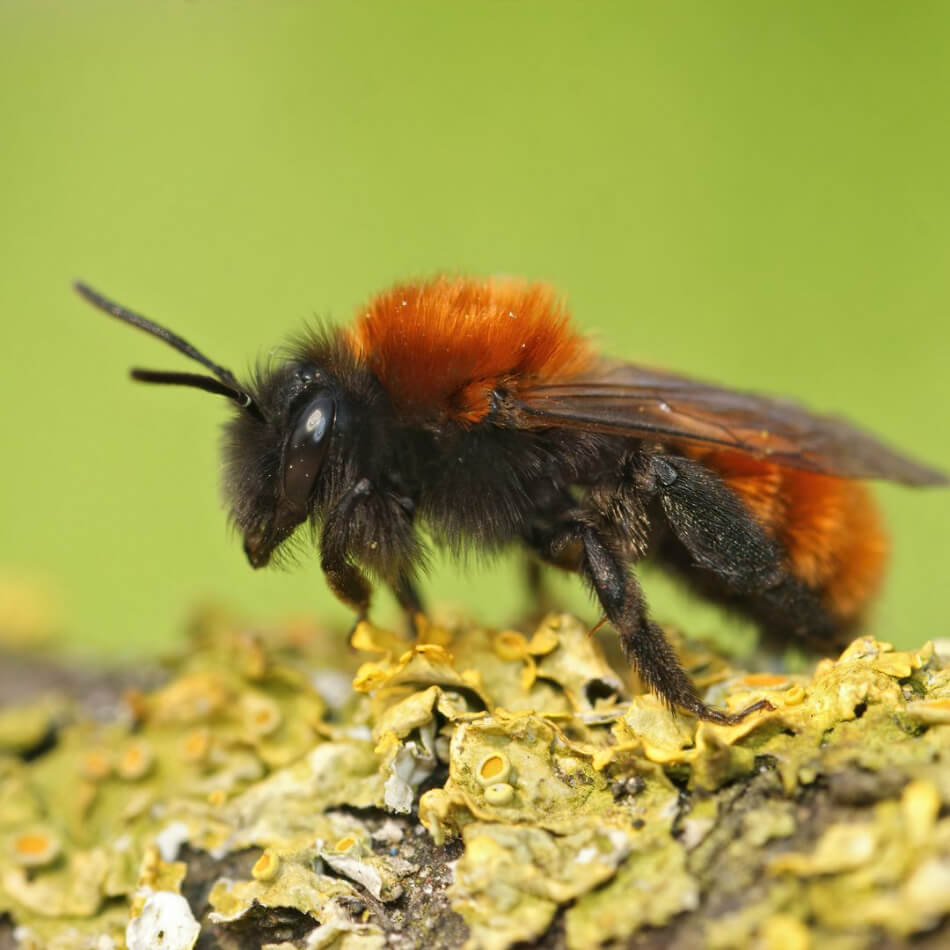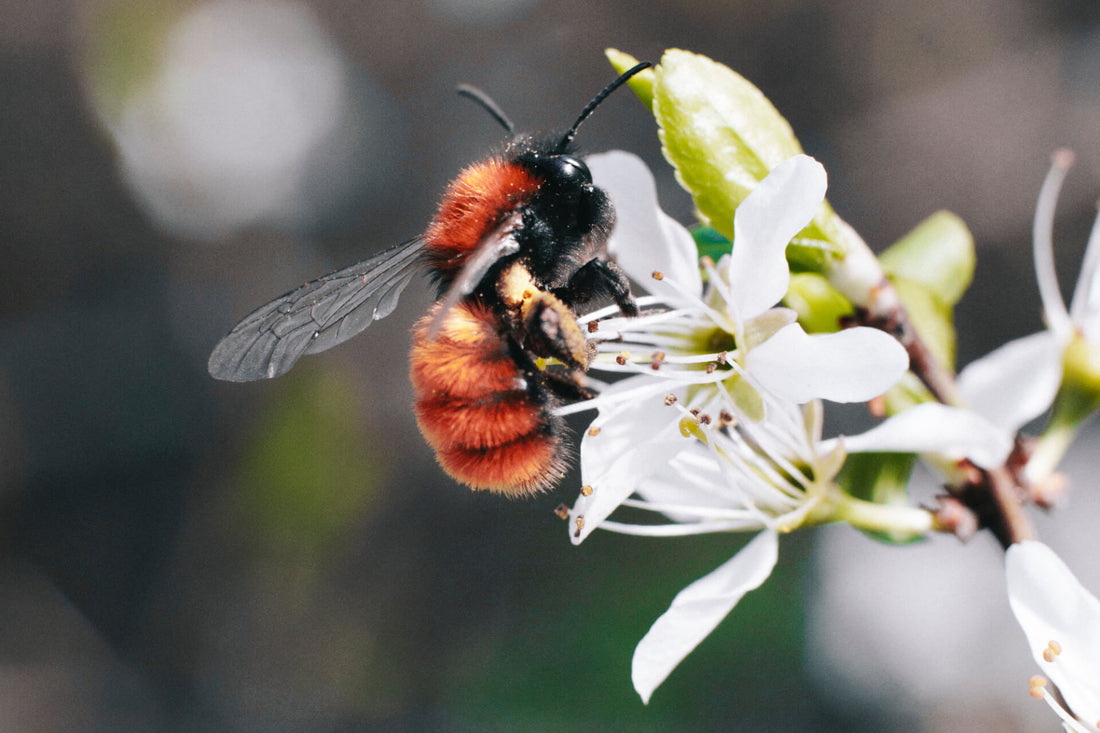A Very Foxy Bee
Did you know that the female tawny mining bees have the same shade of red hair as fox fur?
The males have more orange/light brown hair and are less easily recognisable, as many other mining bees have similar identifying features.
Read on for more tawny mining bee facts...
Recognising One in the Wild
Female Tawny Mining Bees
In addition to their red hair on the thorax and slightly lighter orange hair on their abdomens, female tawny bees have black faces, legs and tummies.
Male Tawny Mining Bees
The males are much thinner than their female counterparts, with additional whiter tufts of hair on their heads and sticking-out jaws.
Both types of bees can also grow up to 1.2cm long.
 Female Tawny Mining Bee
Female Tawny Mining Bee
 Male Tawny Mining Bee.
Male Tawny Mining Bee.
Where Can You Find Tawny Mining Bees?
They tend to live in the south of the UK, but some people have recorded them in central Scotland, with some brief sightings in Ireland.
These furry friends are seen between March and June in parks, gardens and woods and, surprisingly, around sparse areas of greenery.
Are Tawny Mining Bees Solitary or Social?
They are solitary all the way! They are ground-nesting bees who love nothing more than feeding on fruit trees, willows, hawthorn, maple and dandelions.
Fun Facts
- Mining bees are the largest bee genus in the country, with 67 different species!.
- They create little 'volcano-like' piles of soil at the entrance of their burrows. These do not damage your lawn but are fantastic for drainage and aeration.
- A parasitic, look-a-like of tawny mining bees (called The Large Bee-Fly) is known for stealing bee nests. It hovers above a mated bumblebee and flicks its own young into the bee nest. This way, the intruders can eat all the stored pollen and the young bees.
- Unlike wasps, bees are herbivorous only for pollen and nectar, while insects eat invertebrates as predators.
- The best thing about these bees is that they are non-aggressive, so you get to watch them up close going about their buzzy business!
 Volcano shape mining bee
Volcano shape mining bee
Can We Protect Our Red-Bodied Friends?
There are many ways to protect our tawny bees, from avoiding pesticides on your grass to volunteering for local causes such as the Wildlife Trust.
Of course, if you see a tired bee, you can always use your Bee Revival Keyring to give it a sugary boost.
Most of all, we encourage having spaces in your garden that you let grow wild. (It's hard being a bee surrounded by all those perfectly curated lawns!) Leaving these spaces and piles of soil, leaves, and rotting wood for their burrows is a great way to protect them.
Placing tawny bee-friendly flowers and trees like pears, cherries, and apples are also fantastic for their nectar and pollen needs.
Why not join our bee-tastic community to save as many more bees as possible for 2024?
Let's support them in their vital role in pollinating our planet.


